It’s interesting to see how my style and way of seeing has evolved since the last instalment in this series from a year ago; or three years ago (here and here). Perhaps it might be even more interesting to go back a year or two further still and pull out similar material from previous visits. Tokyo is a unique place in my photographic repertoire: I’ve visit every year since 2006 generally at least once once or more, for a short but intense period, and get quite a lot of shooting done because the environment itself is so different and somehow always inspiring. This means that whatever is captured in those trips tends to be a snapshot of the best of my current creative state at the time, being in the right environment and having the right subject matter. At the same time, it’s also somewhat self-consistent in that it’s also fundamental the same sort of environment, the same sort of subject matter, and thus all the better to reflect changes in oneself. I always shoot some ‘conventional’ street in Tokyo, even if I haven’t been doing it previously; I put it down to the place, the people, and the variety of daily life that’s so different to my normal reality. MT
This series was shot with a Canon 100D, 24STM and 55-250STM lenses, and an X1D-50c and 90mm, and post processed with The Monochrome Masterclass workflow. Travel to Tokyo vicariously with How To See Ep.2: Tokyo, learn to be stealthy with S1: Street Photography and see how to capture the essence of a location with T1: Travel Photography.
__________________
Prints from this series are available on request here
__________________
More info on Hasselblad cameras and lenses can be found here.
__________________
Visit the Teaching Store to up your photographic game – including workshop and Photoshop Workflow videos and the customized Email School of Photography. You can also support the site by purchasing from B&H and Amazon – thanks!
We are also on Facebook and there is a curated reader Flickr pool.
Images and content copyright Ming Thein | mingthein.com 2012 onwards. All rights reserved

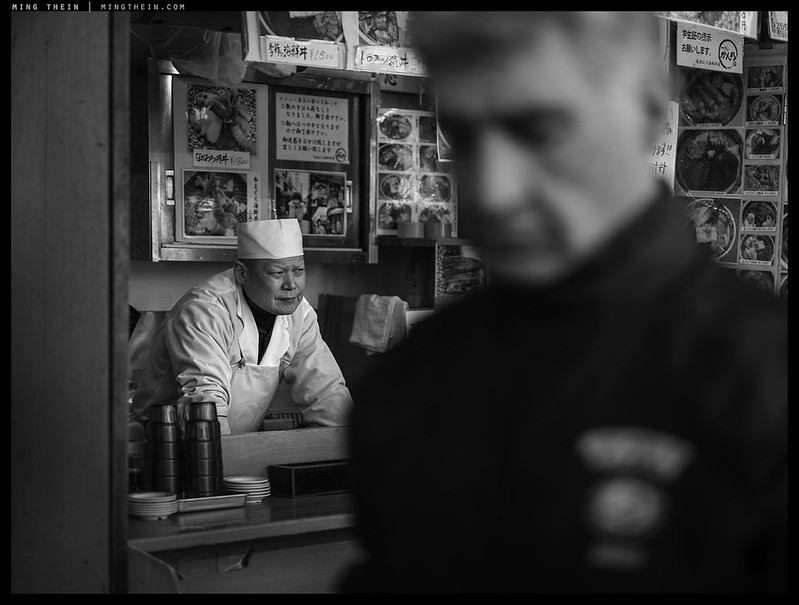
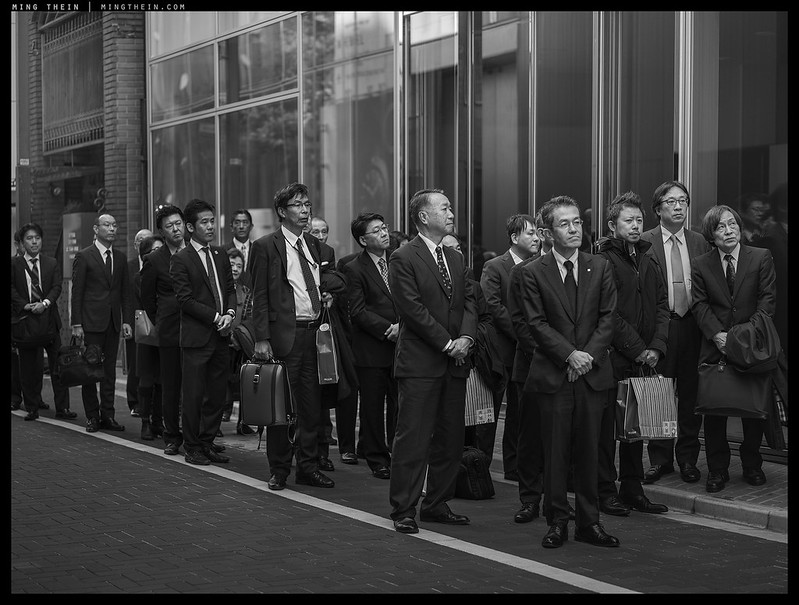
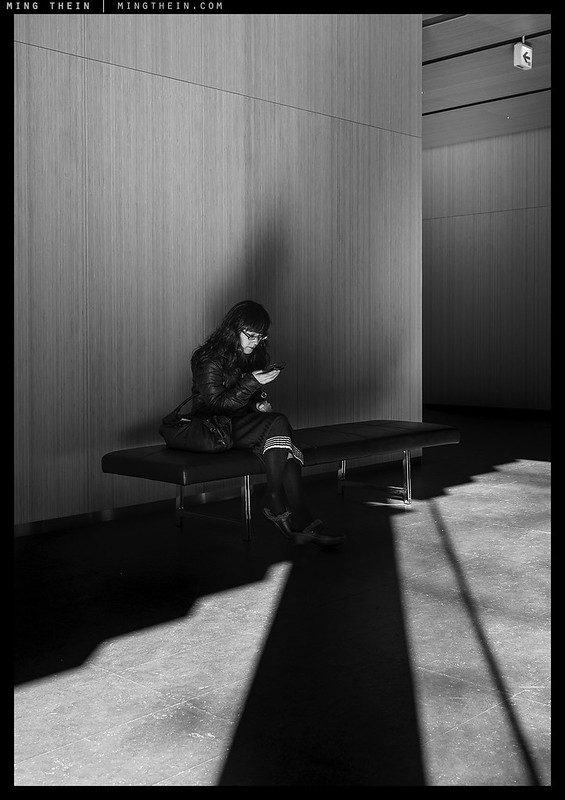
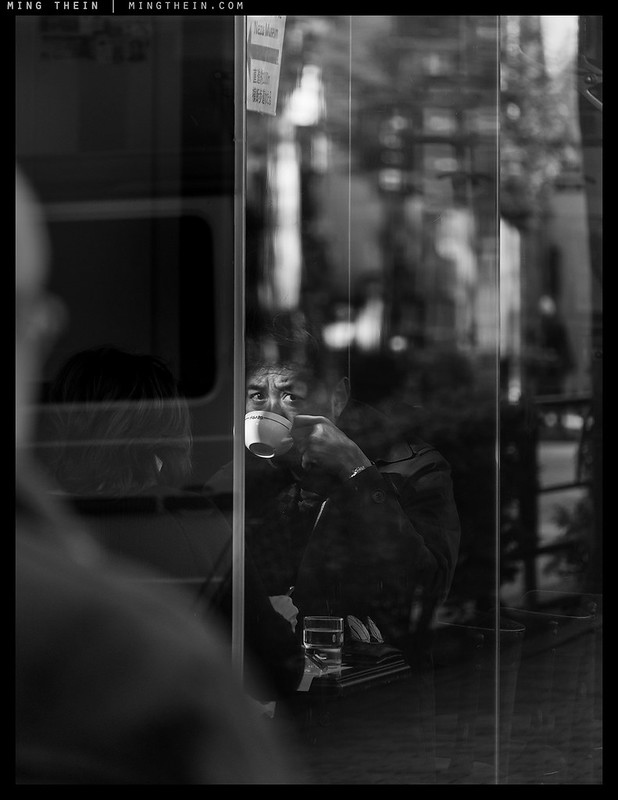
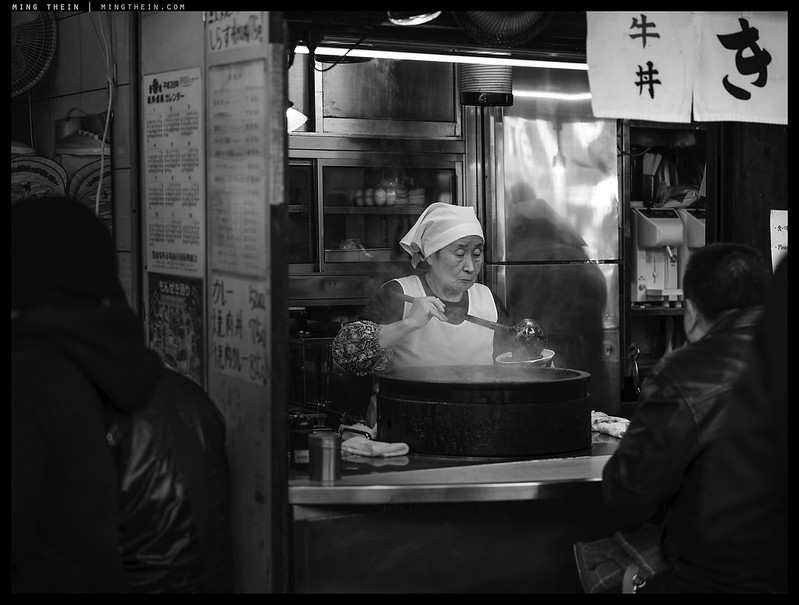
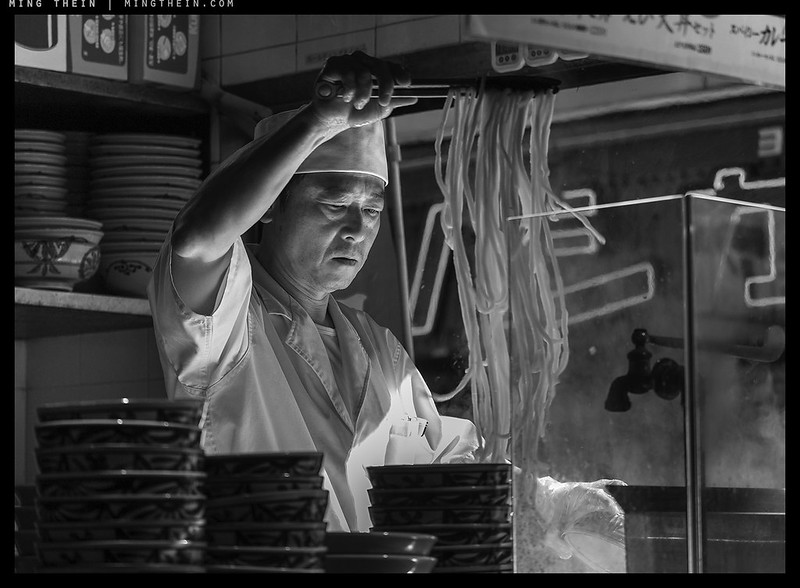

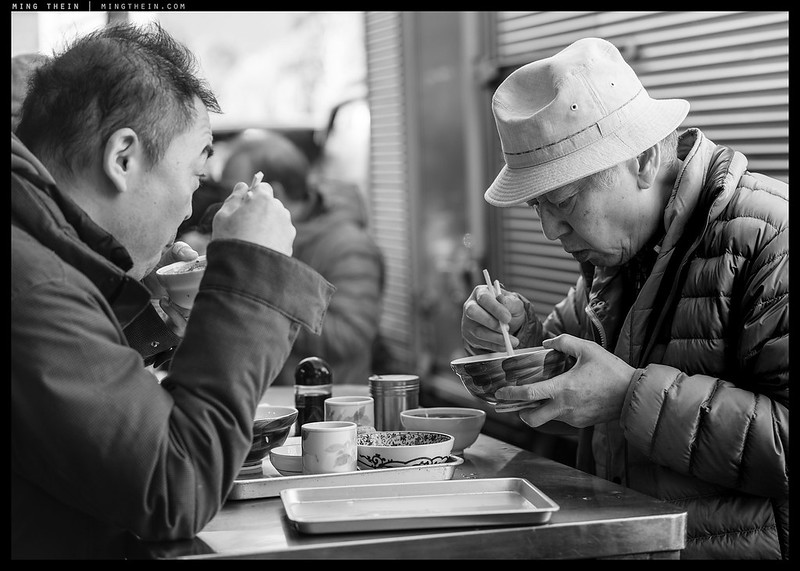
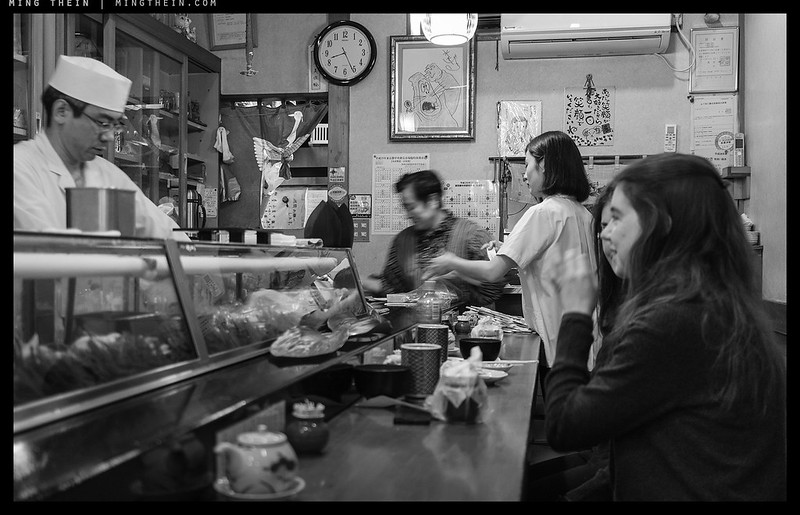

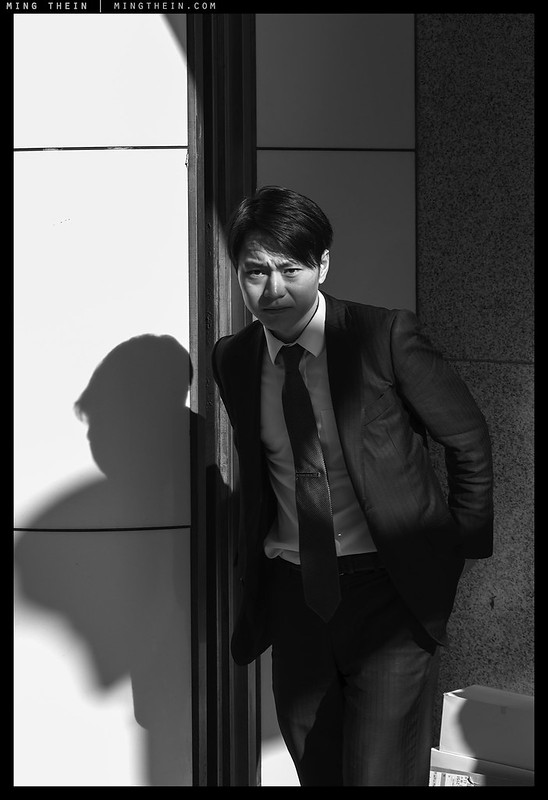
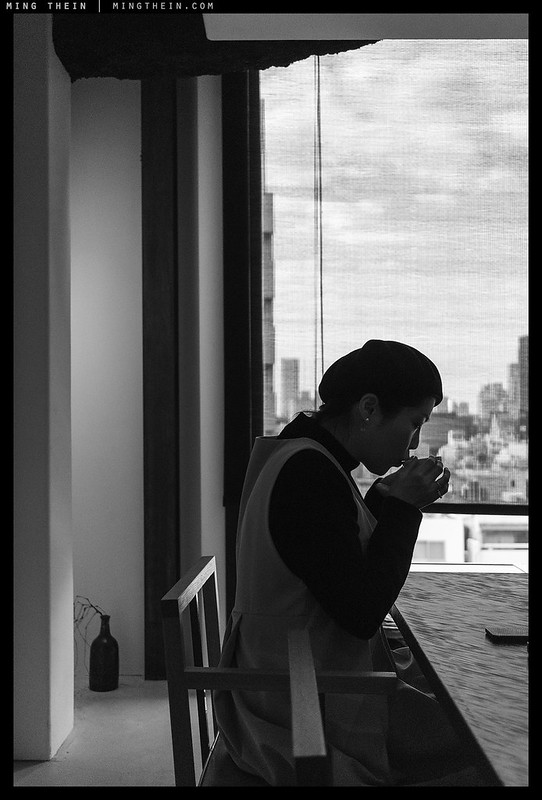





Very good photos and I enjoyed reading some of the comments. I am headed to Tokyo for the first time in June and looking forward to seeing Japan. Thanks for sharing your wonderful images.
Thanks, have a good trip! If it’s your first time, restraint and curation are going to be the hardest part…
Thanks for the advice! I have seen a tendency of other bloggers to photograph all the colors and cliches. I’ll see what I can do there.
Try this: if you’ve seen it somewhere before, either make an exceptional version if you luck out with serendipitous elements, or don’t shoot it at all but instead just experience it…
Love all these b&w visual am seeing in my first visit on your blog.
Thanks!
It was really enjoyable looking through these three different years of your photos in Tokyo. As ever, your composition and craft is really strong. The tack-sharp details and balanced lighting, dynamics, etc are consistently excellent. A major shift though, in your recent work suggests to me you are shooting with much greater confidence, more authority. As Capa said, “If your photographs aren’t good enough, you’re not close enough.” Your work here are so much stronger, more powerful, especially the first one and second to last one in which the business men look right into the camera, the subjects looking back at the viewer. In all of these shots you are much closer to the subject, more intimate and more empathic.
Actually…I’d say it’s a shift in objectives rather than confidence. I’ve always shot as I want/please but the intention this time was to be a little more intimate pictorially and conceptually…
Every Leica sold by B&H comes with directions to the Flatiron building. The migratory passage of photographers. Attenborough may soon do a documentary.
Guy Noir (“In a city that never sleeps…”) and Businessmen’s Queue are good stories.
I believe that I can sort most shots from the ‘cheapest real camera’ from ones from one of the most expensive and capable. Maybe. lol. Your joke is on us. 🙂
🙂
Hi Ming, those are exceptional photographs. Since you invite comparison to your former series, I’d say those are more intimate and (at the risk of sounding pompous) much more about the essence of Japan than about any consideration of personal style. They are direct, simple (by which I don’t mean easy, because those certainly aren’t easy) and very strong. It’s like you’ve spent much more time there and are more influenced by the culture, rather than being “just” an excellent photographer on a brief visit. Hope this makes sense. Brilliant stuff, thanks for sharing.
Thanks – influenced by the subject, rather than personal bias? Or perhaps personal biases changed by prolonged exposure?
Good question. I like to think we become more transparent and receptive as we grow. Either way, we’re probably talking about the same phenomenon. There are many excellent photographers out there but it takes a special person to capture essence as directly.
Or lots of images and good curation 🙂
Oh, come on, don’t shatter my dreams 😉 😉
Great set Ming … some of the nicest BW of seen in awhile. Off topic; How do you like Hassy for a Nikon acquisition? Synergistic nuptials or strange bedfellows?
Hasselblad acquiring Nikon or vice versa? I don’t see either happening…
So Beautiful Pictures. So good to watch . Great work and efforts i must say. As an Photographer i can understand how much efforts and patience are required to capture Pictures like this. Even i started photography as i was inspired by photographers like you. Have a look at my work at http://www.nitinkhanna.net/ and let me know how is it. I would love to hear from photographer like you. Lets get Connected Thank you
Thanks.
The 100D produces some pretty nice results. How’s that EF-S 24STM?
Pretty good, actually – even better when you consider the very low price. 🙂
I needed space to digest these photos, Ming – so I deferred making any comment, for a day or so. I’ve looked through them several times, and they have something quite special. Each one contains an element that seizes my attention. A superficial comment might suggest they are “street photography” and dismiss them as a kind of journalism – but that’s NOT what they are. There is a special character to each and every one of them, and the set of them provides an insight into something special in the photographer created them. Thanks for sharing them.
Sorry – typo – “the photographer WHO created them”
Thanks – now you’re leaving me wondering what it says about me! 🙂
Some real gems here. I try to visualize these shot on Tri-X film. Such would be mind blowing.
Thanks! You’re going to have to enlighten me as to how film would have made them better though 🙂
Exactly what I was thinking. Occasionally I go back to Ming’s film archives. He has done some especially good b&w with film.
Doesn’t matter too much the camera and lens. Hasselblad or Titan. Even the Olympus Stylus.
Again, I’m curious: why does film in particular make it better?
Sometimes when we go to a concert, could be classical or small group. Every so often something special happens, people don’t leave early and head to their cars. Perhaps the same performance done many times, but every so often the performance is extraordinary. I’ve asked performers if they know it’s happening, and they do. I was at one such concert. You figure that a lot of people are just there.
No musical background, but they still know. I talked to someone afterwards, who traveled the world and listened to the best orchestras and in 27 years, he never had this experience. No need to speculate why. Some of the most iconic photos are like that, they are not always technical marvels. When we judge photos first by their technical merits, sometimes that is all there is, we don’t go back for a second look.
If you go out to eat a lot, every so often a meal stands out, it becomes an experience. But, we don’t define it technically. We don’t need someone to tell us that the meal was from mediocre restaurant, therefore we must be mistaken.
If someone were to prefer what they see from film, it’s not technically necessary for them to describe why. “Better” need not come into the conversation. There is no need to prove to someone why they shouldn’t appreciate results that they get from film.
Sorry, I never implied that technical qualities had anything to do with it – I agree, it’s a personal preference, but surely there must still be a reason that can be described?
When shooting digital most of my monochrome is with a Sigma Merrill. Recently I did a session with the Merrill of some historic buildings. Among the images were some close ups of Windows and surrounding bricks. The bricks were dusty, sooty, with missing mortar, when I printed these pictures using a pure carbon inkjet it looked like I could put my fingers between the bricks where the mortar was missing and that I could rub the bricks and remove dust. The images print better than they appear on the monitor. I don’t give myself credit for being a great printer, but I see enough people who spend a lot of money on cameras and lenses and can’t print.
Believing that the camera and lens will take care of it all.
Back on subject. The Merrill monochrome images still look great on my monitor. But, for fun shot off a roll of tri-X on my Olympus Stylus and they were much more pleasing. Of course, a fair comparison would be the same subjects under the same conditions. The Merrill was architecture and the Stylus close ups of people. I don’t shoot enough film, but when I do it’s always is a revelation. More so, shooting with a Rolleifle.
My thoughts of what I am seeing. To my eyes, the Rolleiflex planar would be the extreme. With digital I see more black & white, with film I see a greater range of gray, wthout having to fight for detail. I think this may be why you find film to be more forgiving. I’m only referencing monochrome. The best I can do. Cheers.
Makes sense, but that could be a processing choice as much as anything. I like film’s deep, dark blacks – which is something we can process in, but not so naturally. Digital is better suited towards bright rather than dark, and making the lower shadow transitions work isn’t so easy. That said, I still – personally – prefer the look of digital mono than film…
“shadow transitions”, a good choice of words. I know, if you nail the exposure with a Rolleflex there is very little work to be done. Another lens that does very well is the Nikon 105 sonnar. I’ve found that the rendering changes quite a bit using different lenses with B&W film. The differences don’t make good or bad, just different. Character differences. I think it’s much easier to see
this with B&W, where colors aren’t a distraction. Easier to find a lens that you can love.
Printing with an all carbon inkset is amazing. Even though the prints match your monitor (assuming a calibrated monitor) they can sometimes take on a life of their own. Where my reference for inkjet color printing would be Cibachrome, the all carbon inkset isn’t
so easy to compare with darkroom printing. It’s something all by itself. Having great blacks makes everything else better. From my experience the carbon inkset holds detail better.
This was interesting… Thanks…
The carbon inkset certainly increases Dmax, especially on matte papers – not sure by how much – and I think it may be that which improves the shadows…
I haven’t measured for Dmax, but perceptually it’s significant. Also, the carbon inkset is not affected by light changes. Doesn’t matter, flashlight, sunlight, etc…All carbon, each cartridge.
Yes, because otherwise you’re still making up monochrome with CMYK(+ others) – as neutral as we can get, there are still sometimes shadow or highlight casts…
These are beautiful. I particularly liked the shot of the two women through I assume is a glass wall.
Thanks – yes, through glass; without it you wouldn’t have the layered reflections.
Nice set of photos. I especially like the one of the man with the noodles! I love how he is surrounded with so many bowls and the side lighting really takes this to another level. Nice work!
Thanks!
The post processing on the images is exquisite! Ansel Adams would have taken tips from you! Or maybe it is just my beautiful NEC 30″ screen?
Might be your screen 😛
Very nice series. Quick question for Ming, esp. in the distant possibility of a visit to Tokyo in the next 12 months:
Does the “Monochrome Masterclass” video include processing scans of B&W film negs, or advice on how to proceed from this basis? Other than a section on the zone system, it seems predominantly directed at digital users. Would it be useful for film shooters as well?
Thanks – no, MMC doesn’t include film scanning because Workflow is highly dependent on everything upstream – type of film, how it’s developed, scanned, etc…
Sure: OK thanks that figures.
I really like these shots as they show a more realistic view of Tokyo. I’ve been living here since 1991 and have a pretty good idea of what this city is about and it isn’t what many of the so-called “street photos” on the net show, which are more stylised and idealised. I love this city, but I feel a lot of photographers are trying to build it into something bigger and more incredible than what is in reality. You’ve caught normal people in relatively normal situations, but did it beautifully. This is real life.
I can’t blame them if it’s their first visit – one’s first experience of Tokyo is always pretty intense, and people tend to gravitate towards the sensationalistic stuff simply because it’s so different to ‘normal’ everywhere else. I have to say that it took a few visits to get over that personally; now I’m in the phase of observing the ‘essence of normal’, and I’m sure if I spend too long there it’ll just be business as usual… 🙂
Congratulation Ming !
Excellent result.
Sincerely,
Anatoly
Thanks!
I love street, monochrome and architectural stuff. I find it weird to see the gear used sometimes and see stuff like a 100D, then I have to remember that it doesn’t really matter so much what the body is; it’s the glass at the front and the brain at the rear.
Love these shots.
Thanks – the hardware matters only relative to output: if it’s just web, the glass doesn’t matter too much either (as these images will show – it was all pretty pedestrian stuff). When we talk serious large prints that’s another matter of course…
I find most street photography pretty banal. Somebody takes the same old pictures of a person walking across an intersection, or a poor homeless person, often staring back at the camera.
Yours show people in their daily lives, with expressions on their faces, showing boredom with their job, satisfaction with their job, or concern over something going on in their life. And, with interesting lighting.
The last one really made me think. A place of peace and quiet, having tea the same way it’s been done for centuries, isolated from the modern, bustling and noisy city outside the window.
Great photos indeed.
I agree, and have often said this – street photography should be no different from documentary photography other than the subjects represented are found serendipitously rather than pursued/targeted – you still have to tell a story or at very least be aesthetically pleasing (and of course non exploitative)…in short, it isn’t easy, and yields are low. Curation is crucial.
very nice bites of life !
Thanks.